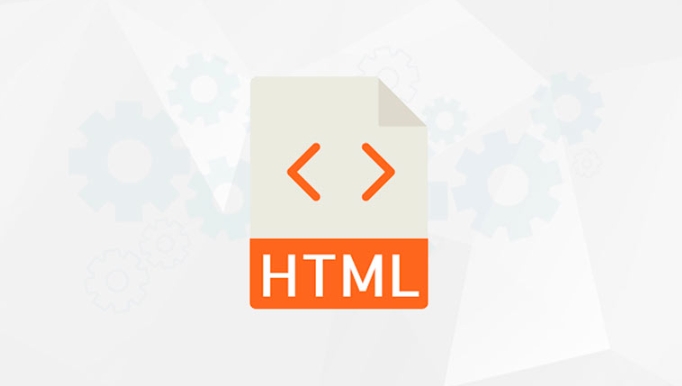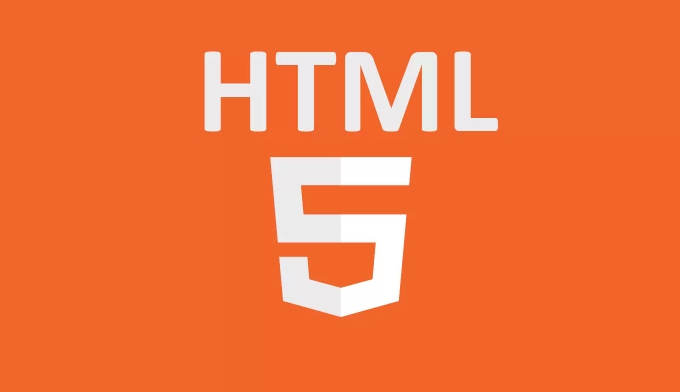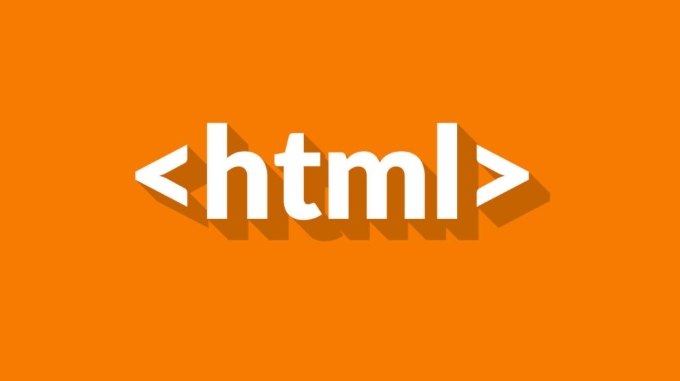What is the purpose of the HTML target attribute in links
Jul 31, 2025 am 11:34 AMThe target attribute in HTML links controls where the linked content opens, with _blank being most common for external links to keep users on the site; always pair it with rel="noopener" for security; other values like _self (default, same tab), _parent (parent frame), _top (full window), or custom frame names are used in specific contexts like framesets or iframes, though these are now rare.

The target attribute in HTML links (<a></a> tags) specifies where the linked document or resource should open when the user clicks the link. It controls the destination context for the URL, such as whether it loads in the current tab, a new tab, a new window, or a specific frame.

Here are the most common values of the target attribute:
-
_self(default): Opens the link in the same frame or tab as the current document. -
_blank: Opens the link in a new tab or window (depending on browser settings). -
_parent: Opens the link in the parent frame, useful when working with framesets. -
_top: Opens the link in the full body of the window, breaking out of any frames. -
Custom frame/iframe name: You can target a specific
<iframe></iframe>or frame by name.
Why use target="_blank"?
The most common use is target="_blank", which is helpful when you want to:

- Keep users on your site while linking to external resources.
- Open documentation, references, or third-party sites without navigating away.
Example:
<a href="https://example.com" target="_blank">Visit Example</a>
?? Important security note: When using target="_blank", always add rel="noopener" (or rel="noreferrer") for security and performance:

<a href="https://example.com" target="_blank" rel="noopener">Visit Example</a>
This prevents the new page from gaining control over the original page via JavaScript (window.opener), which could lead to security risks or performance issues.
When to use other target values
-
_parentand_topare mostly used in legacy sites with frames or iframes, which are now rare. - Named targets (e.g.,
target="myFrame") are useful when working with iframes in dashboards or embedded layouts.
In short, the target attribute gives you control over where a link opens, and target="_blank" is the most widely used for external links — just remember to include rel="noopener" for safety.
Basically, it's about user experience and navigation control.
The above is the detailed content of What is the purpose of the HTML target attribute in links. For more information, please follow other related articles on the PHP Chinese website!

Hot AI Tools

Undress AI Tool
Undress images for free

Undresser.AI Undress
AI-powered app for creating realistic nude photos

AI Clothes Remover
Online AI tool for removing clothes from photos.

Clothoff.io
AI clothes remover

Video Face Swap
Swap faces in any video effortlessly with our completely free AI face swap tool!

Hot Article

Hot Tools

Notepad++7.3.1
Easy-to-use and free code editor

SublimeText3 Chinese version
Chinese version, very easy to use

Zend Studio 13.0.1
Powerful PHP integrated development environment

Dreamweaver CS6
Visual web development tools

SublimeText3 Mac version
God-level code editing software (SublimeText3)

Hot Topics
 What is the loading='lazy' one of the html attributes and how does it improve page performance?
Jul 01, 2025 am 01:33 AM
What is the loading='lazy' one of the html attributes and how does it improve page performance?
Jul 01, 2025 am 01:33 AM
loading="lazy" is an HTML attribute for and which enables the browser's native lazy loading function to improve page performance. 1. It delays loading non-first-screen resources, reduces initial loading time, saves bandwidth and server requests; 2. It is suitable for large amounts of pictures or embedded content in long pages; 3. It is not suitable for first-screen images, small icons, or lazy loading using JavaScript; 4. It is necessary to cooperate with optimization measures such as setting sizes and compressing files to avoid layout offsets and ensure compatibility. When using it, you should test the scrolling experience and weigh the user experience.
 Applying Semantic Structure with article, section, and aside in HTML
Jul 05, 2025 am 02:03 AM
Applying Semantic Structure with article, section, and aside in HTML
Jul 05, 2025 am 02:03 AM
The rational use of semantic tags in HTML can improve page structure clarity, accessibility and SEO effects. 1. Used for independent content blocks, such as blog posts or comments, it must be self-contained; 2. Used for classification related content, usually including titles, and is suitable for different modules of the page; 3. Used for auxiliary information related to the main content but not core, such as sidebar recommendations or author profiles. In actual development, labels should be combined and other, avoid excessive nesting, keep the structure simple, and verify the rationality of the structure through developer tools.
 What are best practices for writing valid and well-formed HTML code?
Jul 01, 2025 am 01:32 AM
What are best practices for writing valid and well-formed HTML code?
Jul 01, 2025 am 01:32 AM
When writing legal and neat HTML, you need to pay attention to clear structure, correct semantics and standardized format. 1. Use the correct document type declaration to ensure that the browser parses according to the HTML5 standard; 2. Keep the tag closed and reasonably nested to avoid forgetting closed or wrong nesting elements; 3. Use semantic tags such as, etc. to improve accessibility and SEO; 4. The attribute value is always wrapped in quotes, and single or double quotes are used uniformly. Boolean attributes only need to exist, and the class name should be meaningful and avoid redundant attributes.
 What are the essential HTML elements for structuring a webpage?
Jul 03, 2025 am 02:34 AM
What are the essential HTML elements for structuring a webpage?
Jul 03, 2025 am 02:34 AM
The web page structure needs to be supported by core HTML elements. 1. The overall structure of the page is composed of , , which is the root element, which stores meta information and displays the content; 2. The content organization relies on title (-), paragraph () and block tags (such as ,) to improve organizational structure and SEO; 3. Navigation is implemented through and implemented, commonly used organizations are linked and supplemented with aria-current attribute to enhance accessibility; 4. Form interaction involves , , and , to ensure the complete user input and submission functions. Proper use of these elements can improve page clarity, maintenance and search engine optimization.
 How to use the style html attributes for inline CSS?
Jul 01, 2025 am 01:42 AM
How to use the style html attributes for inline CSS?
Jul 01, 2025 am 01:42 AM
It is actually very simple to write inline styles using HTML's style attribute. Just add style="..." to the tag and then write CSS rules in it. 1. The basic writing method is CSS style with the attribute value in the form of a string. Each style is separated by a semicolon. The format is the attribute name: attribute value. For example: this paragraph of text is red. Note that the entire style string should be wrapped in double quotes. Each CSS attribute should be added with a semicolon after it. The attribute name is standard writing method of CSS; 2. Applicable scenarios for inline styles include dynamic style control, email template development and rapid debugging, such as allowing the picture to be displayed in the center to be written; 3. Several pitfalls that need to be avoided include high priority but difficult to maintain, many code repetitions, and special characters.
 How can JavaScript be used to create and manipulate HTML tags?
Jul 01, 2025 am 01:42 AM
How can JavaScript be used to create and manipulate HTML tags?
Jul 01, 2025 am 01:42 AM
JavaScript dynamically creates, modifys, moves and deletes HTML elements through DOM operations. 1. Use document.createElement() to create a new element and add it to the page through appendChild() or insertBefore(); 2. Select existing elements through querySelector() or getElementById(), and modify them using textContent, innerHTML, setAttribute() and other methods; 3. When processing multiple elements through loops, you need to note that querySelectorAll() returns NodeList; 4. Move
 Which html attributes are most important for SEO?
Jul 01, 2025 am 01:44 AM
Which html attributes are most important for SEO?
Jul 01, 2025 am 01:44 AM
ThefourmostimpactfulHTMLattributesforSEOarethetitletag,altattribute,hrefattribute,andmetadescription.1.Thetitletaginthesectioniscrucialasitinformsusersandsearchenginesaboutthepage’scontent,mustbeconcise,keyword-relevant,under60characters,anduniqueper
 What are the integrity and crossorigin html attributes used for when loading scripts or styles from a CDN?
Jul 01, 2025 am 01:39 AM
What are the integrity and crossorigin html attributes used for when loading scripts or styles from a CDN?
Jul 01, 2025 am 01:39 AM
Theintegrityattributeensuresaresourcehasn’tbeenmodifiedbyusingacryptographichash,whilecrossoriginhandlescross-originrequeststoenablepropervalidation.1.Integritychecksthefile’sauthenticityviaSHA-256,SHA-384,orSHA-512hashes,blockingmaliciousorcorrupted






